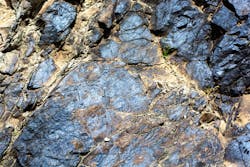Sometimes you can look good if you are armed with the right knowledge at the right time in the right place. One of my projects at U.S. Steel involved the instrumentation at an iron ore beneficiation plant in the late 1970s where iron ore was crushed, concentrated and agglomerated into pellets for use in blast furnaces. The level of iron ore in various bins and hoppers was measured throughout the plant where the size of the material ranged from boulders to rocks to gravel to stones to powder — depending on the location in the process.
The choice of level technology that could be applied to the concentrator feed bins was limited because the bins were tall (30 meters) and the iron ore was abrasive and dusty. Contact level transmitters were out of the question so the plant used ultrasonic level technology for these measurements. If radar level technology was available at the time it would have been very expensive.
A number of manufacturers made ultrasonic level transmitter systems then but few had transducers able to measure the required distance. The plant previously experimented and settled on the one transducer design that used the same downward-pointing sensor surface to send and receive ultrasonic energy. While not perfect, these instruments could be operated and maintained by plant personnel. The same transmitters were purchased for new bins installed in the expansion.
Sometime later, my supervisor called me into his office and told me that the ultrasonic level transmitter system used to measure hot coke and other materials was not measuring properly in another plant. The system was purchased and installed as part of a larger mechanical project that did not receive an instrumentation review. Simply put, I was told to be at the plant at 8 a.m. on Monday to assess the system and determine what could be done.
More next month!
David W. Spitzer is a regular contributor to Flow Control magazine and a principal in Spitzer and Boyes LLC offering engineering; seminars; strategic marketing consulting; distribution consulting; and expert witness services for manufacturing and automation companies. Spitzer and Boyes is also the publisher of the Industrial Automation INSIDER. Spitzer has more than 40 years of experience and has written more than 10 books and 300 articles about flow measurement, instrumentation and process control. He may be reached at 845-623-1830 or at spitzerandboyes.com.
About the Author
David W. Spitzer
David W Spitzer’s new book Global Climate Change: A Clear Explanation and Pathway to Mitigation (Amazon.com) adds to his over 500 technical articles and 10 books on flow measurement, instrumentation, process control and variable speed drives. David offers consulting services and keynote speeches, writes/edits white papers, presents seminars, and provides expert witness services at Spitzer and Boyes LLC (spitzerandboyes.com or +1.845.623.1830).
